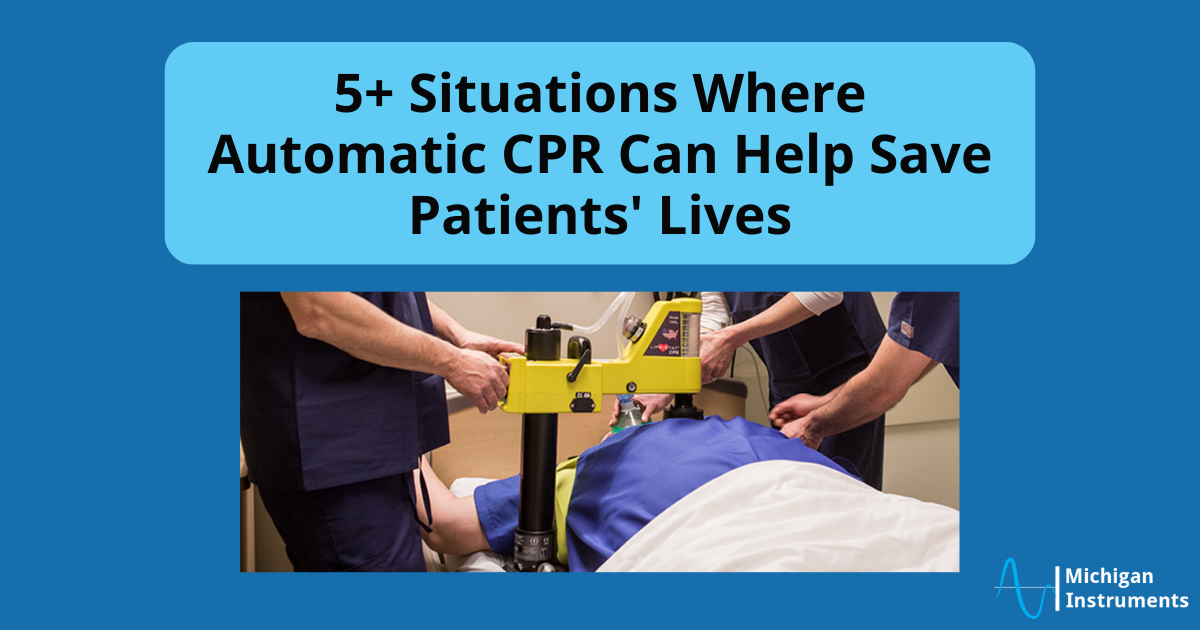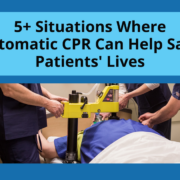
The debate about manual CPR vs automatic (“automatic”) CPR is one that has gone on for decades. While we know there are several advantages to automatic CPR in general, the outcome for patients with heart disease and heart failure who undergo any type of CPR are not always successful.
This is due to the fact that CPR cannot remedy the underlying cause of the heart stoppage. Still, there are conditions where automatic CPR is beneficial to patients and increases odds of survival. This is the case when the underlying cause of the heart stoppage is not related to cardiovascular disease or the heart itself.
Keep reading to understand conditions where automatic CPR is beneficial to patient survival.
1. Prolonged CPR Situations
In many cases, traditional manual CPR is physically demanding for healthcare providers. When a patient requires prolonged resuscitation efforts, fatigue can set in, leading to decreased compression depth and rate, both of which are critical factors in effective CPR.
Automatic CPR devices, on the other hand, can maintain consistent compression quality and rate over extended periods, ensuring that patients receive high-quality chest compressions without interruption.
2. Inconsistent Manual Compressions
One of the key challenges with manual CPR is maintaining consistent chest compressions. Healthcare providers may unintentionally vary compression depth and rate, even with training and experience.
Automatic CPR devices are designed to deliver precise, consistent compressions, minimizing the risk of human error and improving overall patient outcomes.
3. Transporting Patients
During critical care scenarios where patients need to be moved, such as from a home to an ambulance or between hospital departments, maintaining uninterrupted CPR is vital.
Automatic CPR devices can be safely and efficiently used during patient transport, ensuring that chest compressions remain consistent and effective throughout the journey.
4. High-Risk Settings
Certain situations, such as cardiac arrests in helicopters, during MRI scans, or in cramped spaces where it’s difficult to provide manual CPR, require specialized solutions. Automatic CPR devices can be particularly advantageous in these high-risk settings.
They offer the flexibility and stability required to administer high-quality chest compressions while accommodating the unique constraints of each environment.
5. Controlled Environments
In some cases, a controlled environment, like an operating room, may benefit from automatic CPR devices due to the need for precise and consistent chest compressions during surgical procedures or interventions.
These devices can be synchronized with other equipment and procedures, ensuring optimal patient care.
6. Standardization of Care
Standardization of care is essential for improving patient outcomes. Automatic CPR devices provide a consistent and standardized approach to chest compressions, regardless of the provider’s experience or fatigue level.
This consistency enhances the quality of care delivered to patients, increasing their chances of survival.
7. Provide Time to Correct Root Cause of Heart Stoppage
Heart conditions require additional treatments to correct the root cause of the heart stoppage. While doctors are performing these treatments, an automatic CPR device can maintain optimum compressions and perfusion without interruption.
Michigan Instruments’ Life-Stat Automatic CPR device also is open by design to allow doctors easier access to the patient’s chest as they administer treatment and care such as defibrillation, or relief of a pneumothorax by a chest tube.
The Life-Stat is the only device available with a built-in ventilator. This allows the device to administer breaths to the patient per current American Heart Association (AHA) CPR Guidelines.
Doctors and caregivers are able to work hands free to treat the patient’s symptoms— knowing that patients are getting proper AHA specified compressions and coordinated ventilation.
Many hospitals may think that automatic CPR devices belong only in the Emergency Department, but these devices can be used throughout different units including cardiovascular care areas, ICU, step down care units and more.
Some hospitals have found that deploying the Life-Stat to any code blue situation (i.e. heart stoppage) can offer improved results including better cerebral perfusion.
Interested to Learn More? Reach Out Today.
Automatic CPR devices have emerged as a crucial tool in specific situations where consistent and high-quality chest compressions are paramount.
Our CPR devices can enhance patient survival rates, particularly in prolonged CPR situations, during patient transport, in high-risk settings, and wherever standardization of care and quality data collection are essential.
Learn more about our CPR devices or contact us today with any questions you have about its application in your facility’s setting.




